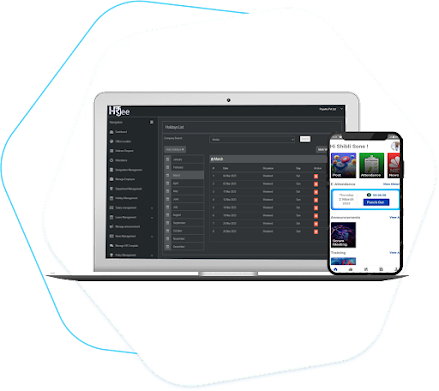Streamlining Human Resource Management with HR Employee Management Systems
In the dynamic realm of modern business, the effective management of human resources is crucial for organizational success. From recruitment and onboarding to performance evaluation and payroll processing, HR departments handle a myriad of tasks that impact employee satisfaction, productivity, and overall company performance. In this article, we'll explore the significance of HR Employee Management Systems (EMS), their key features, benefits, and how they revolutionize the way HR functions are carried out.
Understanding HR Employee Management Systems
An HR Employee Management System is a comprehensive software solution designed to streamline and automate various HR processes, ranging from talent acquisition and employee record-keeping to performance management and compliance reporting. These systems leverage technology to centralize HR data, facilitate efficient communication between HR personnel and employees, and improve the overall HR workflow.
Key Features of HR Employee Management Systems
Recruitment and Applicant Tracking: EMS allows HR professionals to create job postings, manage applications, and track candidates throughout the recruitment process. Features may include resume parsing, candidate screening, and interview scheduling to streamline hiring efforts.
Employee Onboarding: From digital document signing to online training modules, EMS simplifies the onboarding process for new hires, ensuring a smooth transition into the organization.
Time and Attendance Tracking: EMS enables employees to clock in and out electronically, tracks worked hours, and automates timekeeping tasks. This feature helps HR managers accurately monitor attendance, track overtime, and calculate payroll.
Performance Management: EMS facilitates ongoing performance evaluations, goal setting, and feedback exchange between managers and employees. Performance metrics and appraisal records are stored digitally, allowing for data-driven decision-making and talent development initiatives.
Employee Self-Service Portal: An intuitive self-service portal empowers employees to access their personal information, submit time-off requests, view pay stubs, and update their profiles without HR intervention, enhancing efficiency and employee satisfaction.
Benefits Administration: EMS streamlines benefits enrollment, manages employee benefit plans, and assists with compliance reporting related to health insurance, retirement plans, and other employee benefits.
Learning and Development: Many EMS platforms offer learning management features that deliver online training courses, track employee progress, and support professional development initiatives.
Analytics and Reporting: Robust reporting tools within EMS provide HR managers with insights into workforce trends, turnover rates, training effectiveness, and other key metrics, enabling data-driven decision-making.
Benefits of HR Employee Management Systems
Improved Efficiency: By automating repetitive tasks and centralizing HR data, EMS reduces administrative burden, minimizes errors, and frees up HR personnel to focus on strategic initiatives.
Enhanced Compliance: EMS helps ensure compliance with labor laws, industry regulations, and internal policies by standardizing processes, maintaining accurate records, and generating compliance reports.
Increased Employee Engagement: Self-service features and transparent communication channels provided by EMS foster greater employee engagement and satisfaction, leading to higher retention rates and improved morale.
Cost Savings: While the initial investment in an EMS may seem significant, the long-term cost savings from reduced paperwork, improved efficiency, and better resource allocation often outweigh the expenses.
Scalability: As organizations grow and evolve, EMS can scale to accommodate changing needs and accommodate larger workforces, making it a flexible solution for businesses of all sizes.
Data-Driven Decision Making: With access to real-time HR analytics and insights, decision-makers can identify trends, address issues proactively, and make informed decisions to optimize workforce management strategies.
Choosing the Right HR Employee Management System
When selecting an EMS for your organization, consider factors such as scalability, ease of use, integration capabilities with existing systems, vendor reputation, and customer support. Conduct thorough research, request demos, and involve key stakeholders in the decision-making process to ensure alignment with organizational goals and requirements.
In conclusion, HR Employee Management Systems play a pivotal role in modernizing HR operations, driving efficiency, and fostering a positive employee experience. By leveraging technology to automate routine tasks, streamline processes, and empower employees, organizations can unlock their full potential, stay competitive in the market, and achieve long-term success.



Comments
Post a Comment